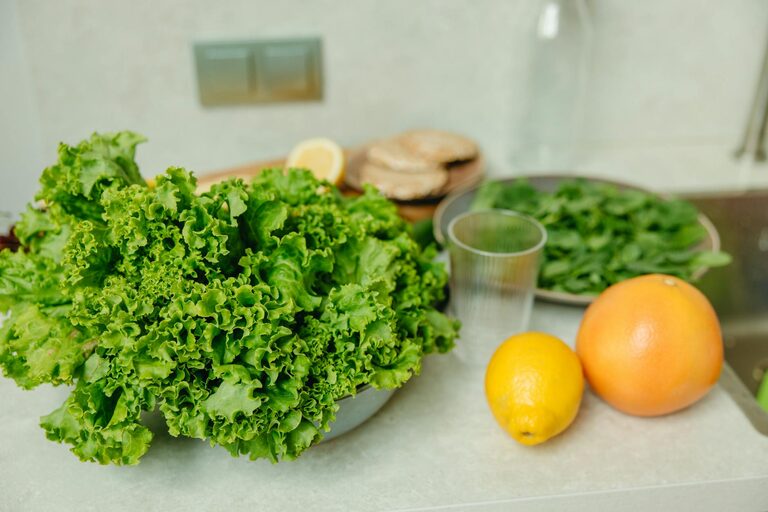
How to Plan Balanced Meals Without Stress: Simple Tips for Every Day
Eating balanced meals is a cornerstone of a healthy lifestyle, yet many people find meal planning overwhelming. Between busy schedules and endless food choices, it’s easy to feel stressed about what to cook each day. The good news? Planning nutritious, satisfying meals doesn’t have to be complicated or stressful. With a few simple strategies, you can streamline your meal prep and enjoy wholesome foods that energize your body.
In this post, we’ll explore how to plan balanced meals without stress, offering practical tips that work for any lifestyle.
What Is a Balanced Meal?
Before diving into meal planning tips, it helps to know what a balanced meal looks like. Generally, a balanced meal includes:
– Protein: Supports body functions and keeps you full (e.g., chicken, beans, tofu, fish).
– Vegetables: Provide essential vitamins, minerals, and fiber.
– Whole grains or starchy vegetables: Offer energy and dietary fiber (e.g., brown rice, quinoa, sweet potatoes).
– Healthy fats: Help with nutrient absorption and satiety (e.g., olive oil, nuts, avocado).
– Optional: A small portion of fruit or dairy depending on your preferences.
Having a variety of these components ensures you get the nutrients you need while enjoying different flavors and textures.
Step 1: Keep It Simple
One key to stress-free meal planning is simplicity. You don’t need to prepare complicated dishes every day. Here’s how to keep your meals straightforward:
– Use familiar ingredients in different ways.
– Choose recipes with 5-7 ingredients.
– Cook in batches and reuse components across meals.
– Focus on whole foods rather than processed options.
This approach saves time and reduces decision fatigue.
Step 2: Plan Ahead with a Weekly Menu
Taking 15-20 minutes each week to plan your meals can prevent last-minute scrambling. Consider these steps:
- **Write down 3-4 dinner ideas you enjoy.** Rotate them through the week.
- **Incorporate leftovers.** Plan meals that create leftovers you can use for lunches or dinners.
- **Include quick meals.** Batch cook grains or roast vegetables ahead to assemble meals quickly on busy days.
- **Balance nutrients.** Aim for protein, veggies, and carbs on your plate.
Use a simple spreadsheet, meal-planning app, or even pen and paper to organize your week.
Step 3: Stock a Well-Organized Pantry and Fridge
Having staple ingredients on hand makes meal prep smoother. Consider keeping these basics available:
– Grains: brown rice, oats, quinoa, whole wheat pasta
– Proteins: canned beans, frozen chicken, eggs, tofu
– Vegetables: fresh greens, carrots, bell peppers, broccoli
– Healthy fats: olive oil, nut butters, seeds
– Herbs and spices: garlic, basil, cumin, chili flakes
Organize your kitchen so you can easily see what you have. This avoids food waste and helps you plan meals around available items.
Step 4: Batch Cook and Prep Ingredients
Batch cooking can be a game-changer. Pick a day to prepare large portions of grains, proteins, or roasted veggies that can be mixed and matched throughout the week.
Some ideas for batch prep:
– Cook a big pot of chili or stew.
– Roast trays of vegetables for easy side dishes.
– Hard-boil eggs for snacks or salads.
– Pre-chop veggies for stir-fries or salads.
Having ready-made ingredients cuts down daily cooking time and reduces stress.
Step 5: Mix and Match Meal Components
When planning meals, think of them as flexible combinations rather than strict recipes. By mixing proteins, grains, and vegetables, you create variety without extra work.
For example:
– Grilled chicken + quinoa + steamed broccoli
– Black bean chili + brown rice + avocado slices
– Stir-fried tofu + whole wheat noodles + mixed veggies
This approach keeps meals interesting and adaptable based on what’s available or in season.
Step 6: Use Time-Saving Tools
Certain kitchen tools can make meal prep faster and less stressful:
– Slow cooker or Instant Pot for hands-off cooking.
– Food processor or mandoline slicer for chopping.
– Airtight containers for storing leftovers and prepped ingredients.
Investing a little in these tools can save hours during the week.
Step 7: Listen to Your Body and Preferences
Balanced meals are not one-size-fits-all. Pay attention to hunger cues and personal tastes:
– Adjust portion sizes to how hungry you feel.
– Include favorite foods to keep meals enjoyable.
– Don’t stress about perfection—aim for progress, not strict rules.
Your food choices should nourish and satisfy you, not add anxiety.
Sample Stress-Free Balanced Meal Ideas
Here are some quick meal ideas to get you started:
– Breakfast: Greek yogurt with fresh fruit and nuts.
– Lunch: Mixed green salad with grilled chicken, quinoa, and a drizzle of olive oil.
– Dinner: Baked salmon with sweet potato wedges and steamed broccoli.
– Snack: Hummus with carrot sticks or a piece of fruit.
Feel free to swap ingredients based on your preferences and seasonal availability.
Final Thoughts
Planning balanced meals without stress is achievable with a little preparation and a flexible mindset. Start small, keep meals simple, and focus on nourishing your body in a way that fits your lifestyle. Over time, you’ll find that meal planning becomes an easy, even enjoyable part of your routine—helping you eat better, save time, and reduce stress.
Happy cooking!
